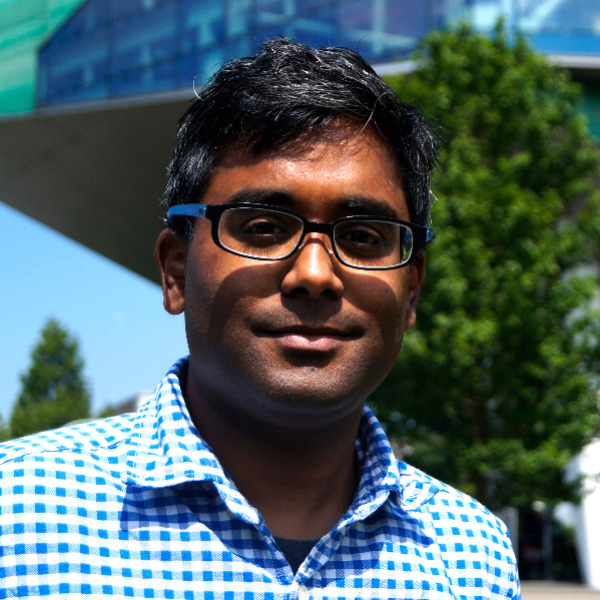| University | University of Groningen (UG) |
| Institute and/or group | Groningen Biomolecular Sciences & Biotechnology Institute (GBB) |
| Advisors | Prof. dr. Dirk Slotboom (UG), Prof. dr. Arnold Driessen (UG) |
| oLife Research Areas | II. Defining properties and synthesis of Life, from the molecular to the biosphere level III. Modelling, predicting and steering of Life |
| Start date
End date Next career step |
December 1, 2019
November 30, 2022 Sosei Heptares, Cambridge, UK |
Profile of the fellow
Chancievan Thangaratnarajah was born and grew up in Germany. For his higher education he moved to London, where he obtained his undergraduate degree in Biochemistry at the University of Westminster.
Soon after, he spent two years at the University of Oxford, where he became interested in how signals and molecules cross biological membranes, working on growth factor signalling proteins and on the ATP-sensitive potassium channel, in the groups of Dr. Bullock and of Prof. Dame Ashcroft, respectively.
Subsequently, he moved to Cambridge to pursue a PhD on the structural and functional characterisation of the human mitochondrial aspartate/glutamate carrier under the supervision of Prof. Kunji at the MRC Mitochondrial Biology Unit. After obtaining his PhD in 2015, he continued his research there, elaborating on the same subject, as an MRC Career Development Fellow.
Being part of Prof. Slotboom´s and Dr. Paulino´s groups at the University of Groningen, his research focuses on the characterisation of membrane proteins by electron cryo-microscopy.
Apart from his interest in biological sciences, Chancievan has an active interest in travelling and wild-life photography. In his spare time, he enjoys reading, drawing, cooking and playing Capoeira.
Molecular properties of chloroplast transporters
The emergence of chloroplasts is a major evolutionary event, considered to be key to the origin of life. According to the endosymbiotic theory, this event occurred as a result of the engulfment of a free-living cyanobacterium by a phagotrophic protist, more than a billion years ago, ultimately giving rise to the ancestor of today´s plants and green algae. This mutually beneficial relationship lead to the unification of metabolic pathways and the formation of individual, highly specialised membrane-bound compartments, known as organelles. Efficient function of this system was achieved by the formation of transport systems, to allow for the movement of metabolites and ions across the specialised organelles.
Chloroplasts are exclusively found in plants and green algae. Their main function is photosynthesis, but they are also essential for assimilating nitrogen and sulphur, as well as acting as metabolic factories. Their central role in the cell relies on the recruitment of various classes of membrane proteins, in order to transport substrates and products of metabolic reactions happening both inside the organelle and in other parts of the cell. A systematic analysis of the transporters embedded in chloroplast membranes revealed that the majority originated from the host, with a small percentage being of cyanobacterial origin.
Some of these transporters belong to the ATP-binding cassette (ABC) transporter family and are found in the inner membrane of chloroplasts, but very little is known about their molecular properties. This could be because of the challenges arising when expressing functional recombinant chloroplast membrane proteins, making it really demanding to obtain sufficient amounts for functional and structural studies.
The goal is to use multidisciplinary approaches to study the molecular properties of chloroplast transporters. Apart from shedding light into the evolution of phylogenetically-related bacterial transporters, this study aims to answer why a set of transporters of cyanobacterial origin has been retained in the chloroplast and how these transporters have adapted and integrated into the host´s metabolism. Understanding the fundamental aspects of plant metabolism is essential for engineering novel and sustainable systems in the bioenergy, pharmaceutical and food industry.

Dr. Chancie Thangaratnarajah
